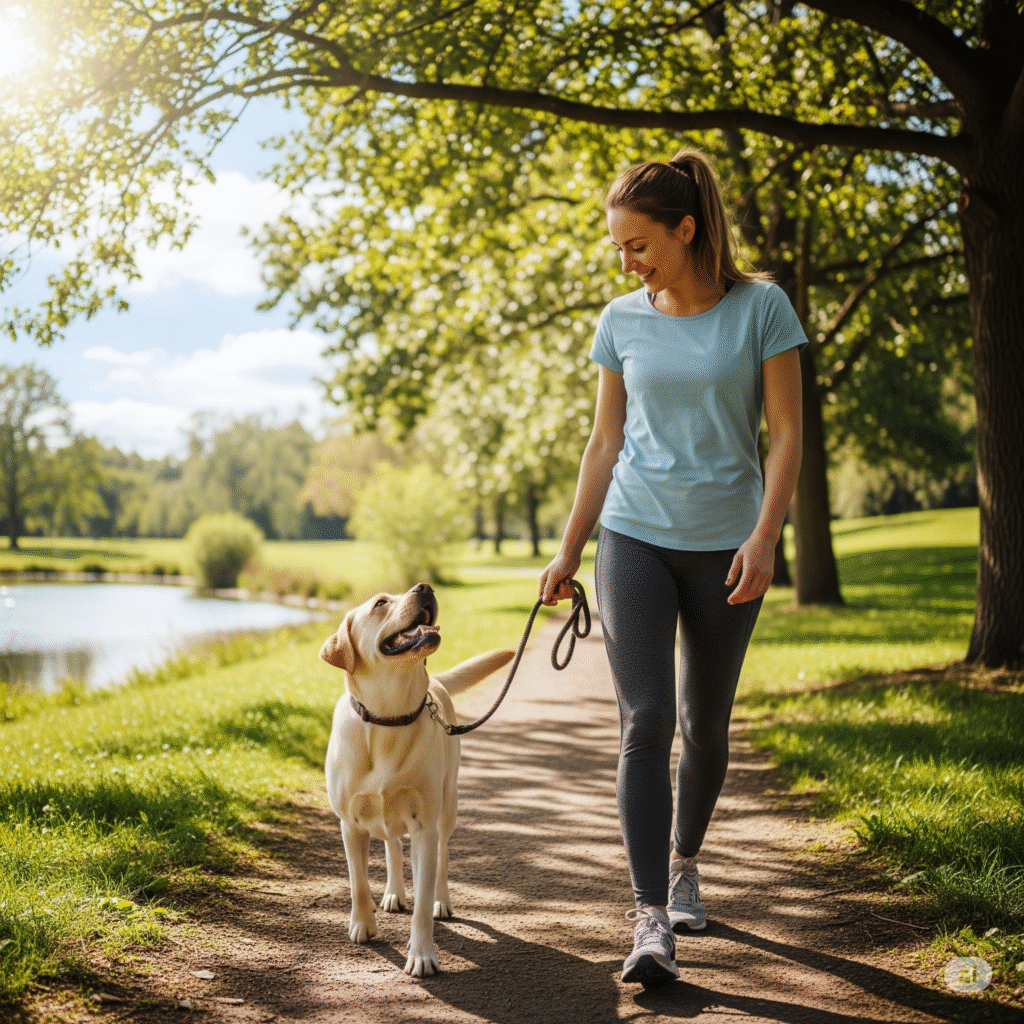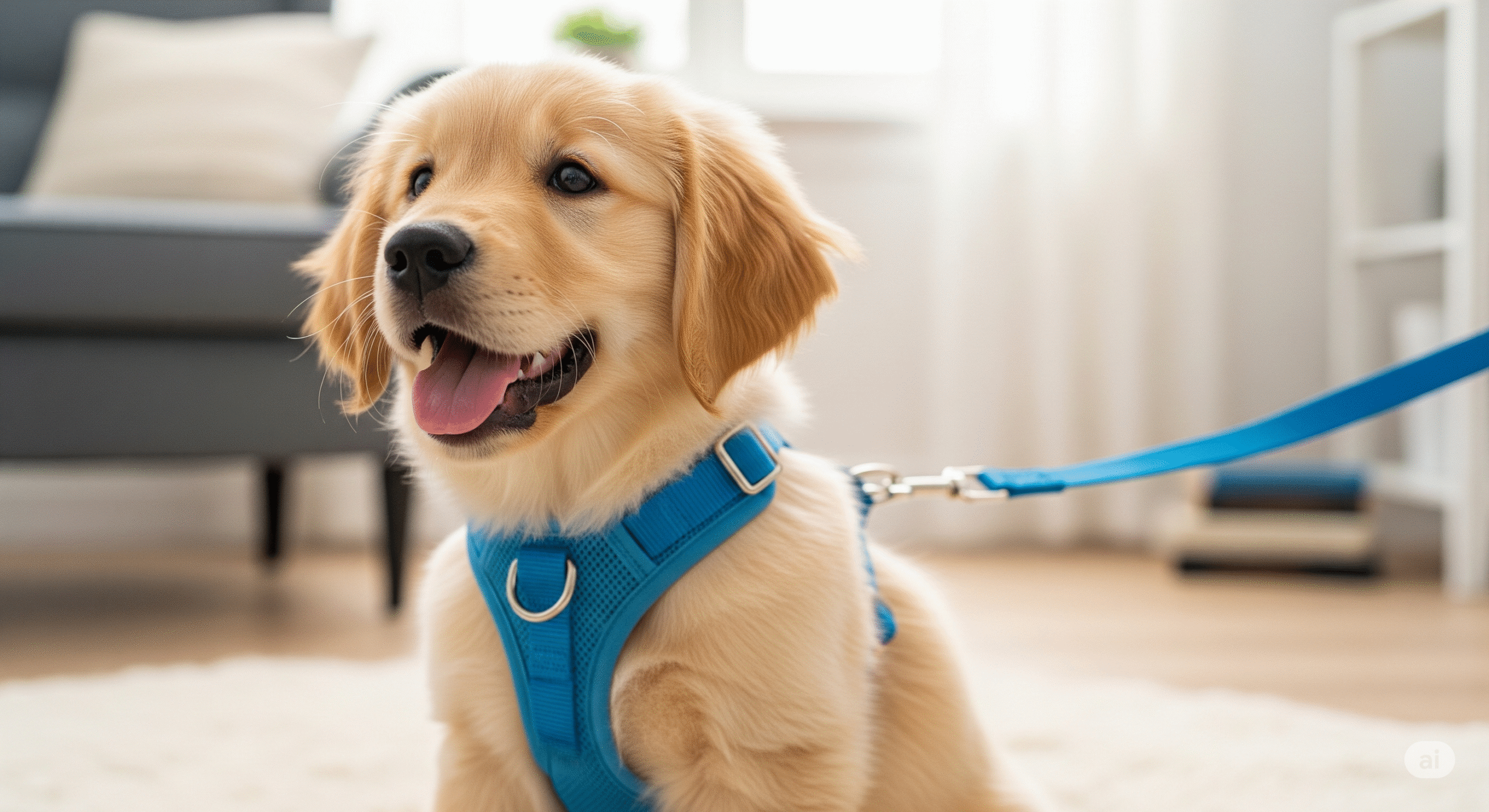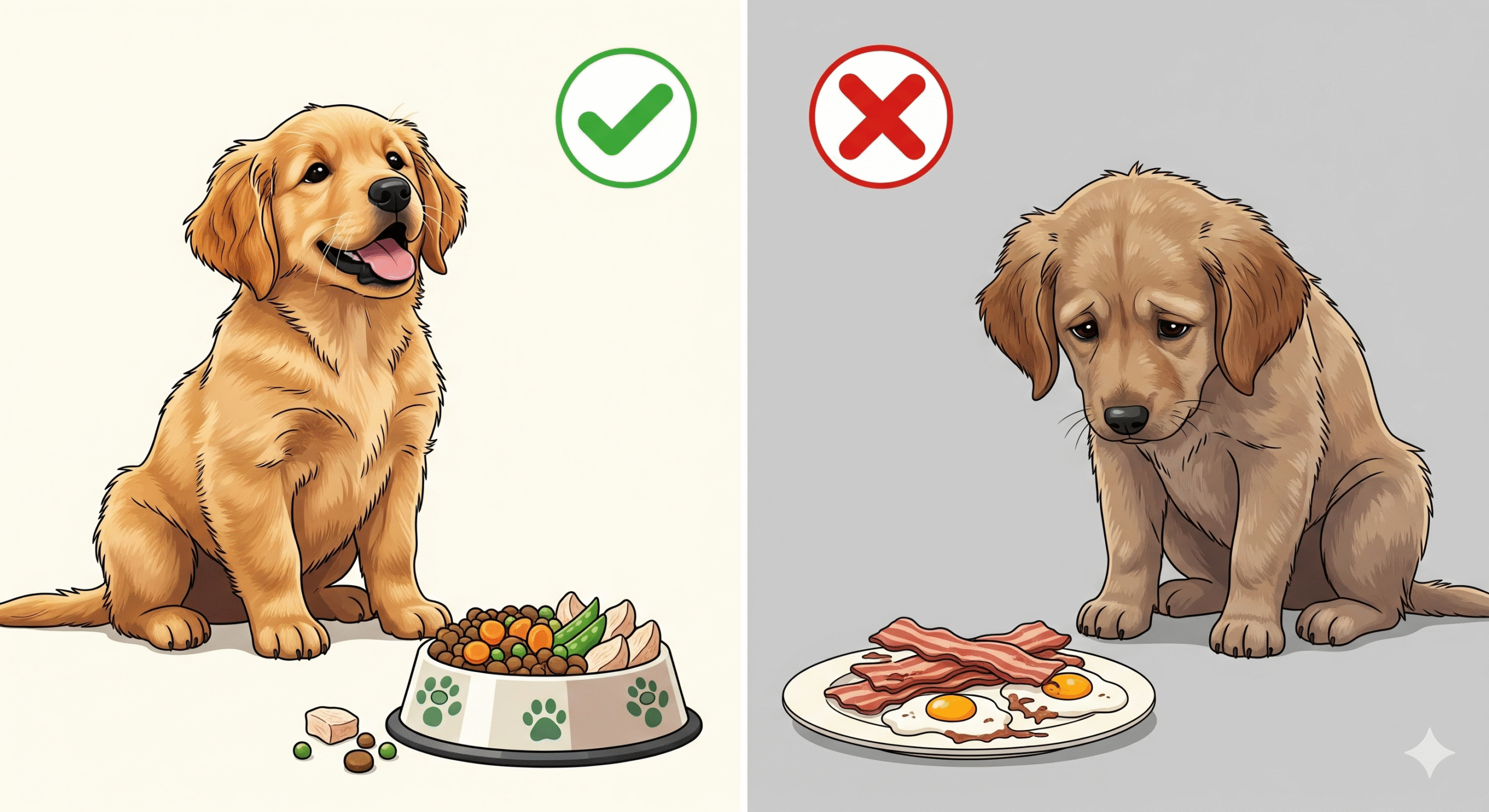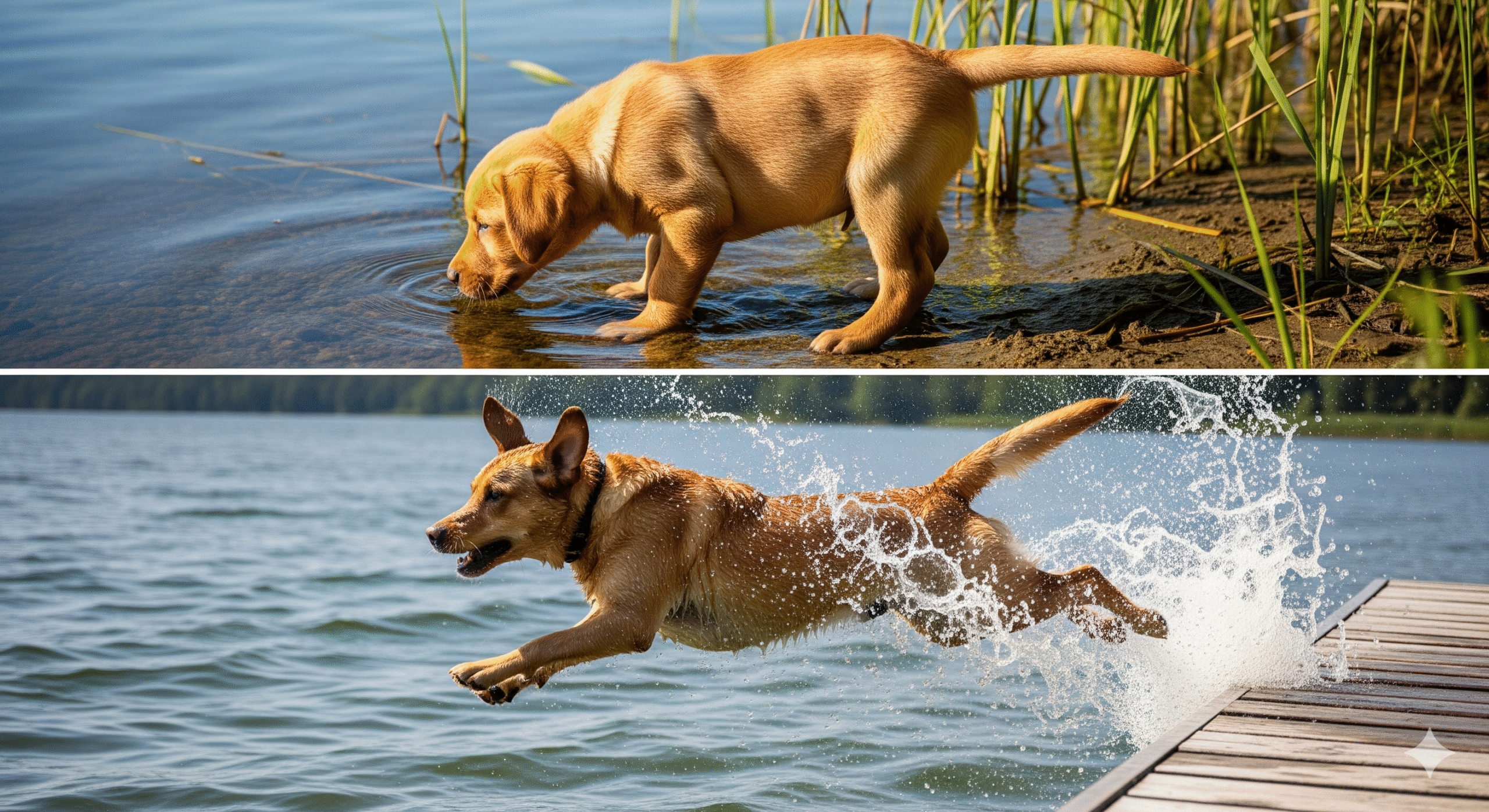There are few things more iconic—or initially frustrating—than the image of a person being pulled down the street by their exuberant puppy. If your daily walk feels like a battle of wills, you’re not alone. Leash training a puppy is one of the most essential skills you will teach them, but it requires patience, consistency, and an understanding of your pup’s world.
This comprehensive guide breaks down the process into manageable, positive steps. We’ll move from introducing gear to mastering a loose leash, transforming your walks from a chore into a cherished bonding activity. Get ready to learn how to leash train a puppy effectively and humanely. Let’s turn those tug-of-wars into peaceful strolls! 🦮
Why Leash Training is Non-Negotiable: Safety, Bonding, and Freedom 🔐
Before we dive into the “how,” it’s crucial to understand the “why.” Proper leash manners are about far more than just convenience.
- Safety First: A dog that pulls can easily slip its collar and run into traffic, approach an unfriendly dog, or get lost. You are your puppy’s primary protector on walks.
- Strengthening Your Bond: Walktime is partnership time. When you work together, you build trust and communication. A forced “walk” where you’re constantly correcting them damages that bond.
- The Key to More Freedom: A well-trained dog gets to go more places! Whether it’s a busy street, an outdoor cafe, or a hiking trail, good leash manners open up a world of adventures.
- It’s the Law: Most municipalities have leash laws designed to protect people, wildlife, and other dogs.
Expert Insight: “Think of the leash not as a restraint, but as a communication tool. It’s like holding your child’s hand in a parking lot—it’s not to hold them back, but to keep them safe while you explore the world together.” – Sarah Miller, Certified Professional Dog Trainer (CPDT-KA).
Pre-Walk Prep: Gear Up for Success 🎽
Using the right equipment can make a monumental difference in your training success and your puppy’s comfort.
Choosing the Right Equipment
- Harness vs. Collar: For most puppies, especially pullers, a front-clip harness is the gold standard. It gently discourages pulling by turning the puppy towards you when they lunge forward, without putting pressure on their fragile throat and trachea. A flat collar is best for holding ID tags, not for controlling a pulling pup.
- Leash Selection: Opt for a standard 4-to-6-foot nylon or leather leash. Avoid retractable leashes for training. They teach dogs to constantly pull against tension and make it impossible to maintain consistent communication.
The All-Important Positive Associations
Your goal is for your puppy to LOVE their gear. The sight of the harness should mean fun is coming!
- Let them sniff the harness and collar.
- Feed them several high-value treats through the neckpiece.
- Clip it on for short periods indoors, showering them with praise and treats.
- Attach the leash and let them drag it around the house (under strict supervision) so they get used to the weight.
The Step-by-Step Guide to Leash Train a Puppy
Patience is your best tool. Rushing through these steps will set you back. Train in short, 5-10 minute sessions to keep it fun.
Step 1: Foundation Indoors (No Distractions) 🏠
The living room is your training studio. It’s a low-distraction environment where your puppy can focus.
- The Name Game: With your puppy on leash, take a few steps backward. Use a happy voice to say their name or “Let’s go!” When they follow you, mark the behavior with a “Yes!” or a clicker and reward with a treat.
- Follow the Food: Hold a treat at your side at your puppy’s nose level. Walk a few steps. If they stay with you, give them the treat. This teaches them the prime “heel” position is rewarding.
- Introduce Gentle Pressure: If they hit the end of the leash, stop moving. Become a tree. The second they look back at you or loosen the leash, mark and reward. They learn that tension makes the fun stop, but checking in with you makes it start again.
Step 2: Mastering the Loose Leash
The core concept of puppy loose leash walking is simple: a tight leash = stop, a loose leash = go.
- The Red Light, Green Light Method:
- Green Light: You are walking. The leash is loose.
- Red Light: The second the leash gets tight, you STOP immediately. Do not pull, yank, or drag your puppy.
- Wait: Stand still and wait. Your puppy will likely pull harder at first.
- The Click/Treat Moment: The instant the leash goes slack—even if it’s because they turned back to look at you—you mark (with a “Yes!”) and reward.
- Green Light: Resume walking.
- This requires immense patience but is incredibly effective. Your puppy learns that pulling gets them nowhere, but a loose leash is what makes forward movement happen.
Step 3: Taking It Outside (High Distractions) 🌳
The backyard or a quiet sidewalk is a whole new world of smells and sights. Expect your puppy to regress. This is normal!
- Lower Your Expectations: A 5-foot walk with only three pulls is a massive success outside! Keep sessions very short.
- Use “Super High-Value” Treats: Upgrade from kibble to something irresistible like small bits of boiled chicken, hot dog, or cheese. You are competing with the entire environment for their attention.
- Distance is Your Friend: Start your training at a distance from big distractions (like another dog). As your puppy succeeds, you can very slowly decrease the distance.
Troubleshooting Common Leash Training Problems 🚧
- My Puppy Won’t Move / Lies Down: Make it more fun! Use a happy voice, run away a few steps, or use a favorite toy to encourage movement. Never drag them.
- Extreme Pulling: Double-check that you’re using a front-clip harness. Go back to Step 1 in a less distracting environment. The red light/green light method is your best friend here.
- Biting the Leash (aka “The Shark”): This is often a sign of over-tiredness or a need to chew. Carry a appropriate chew toy and immediately swap it for the leash. If it persists, end the training session; your puppy is likely done learning for now.
- Reactivity (Barking/Lunging): This is often rooted in fear or over-excitement. Stop and create more distance from the trigger immediately. This is a more advanced issue that may require the help of a professional positive-reinforcement trainer.
What NOT to Do: Avoiding Common Mistakes
- NO Retractable Leashes for Training: They teach constant pulling and can cause serious injuries.
- NO Yanking or Jerking: This can physically injure your puppy’s neck and damage their trust in you. It also often increases arousal and excitement.
- NO Punishment: Never yell at or hit your puppy for pulling. You will only create a negative association with walks and with you.
- Don’t Be Inconsistent: If you sometimes let them pull to get to the park and sometimes don’t, you are confusing them. Be patient and consistent with the rules.
Conclusion: The Path to Perfect Walks is a Journey
Leash training a puppy is not a one-weekend project. It’s a ongoing process that requires consistent practice and a hefty dose of patience. There will be good days and bad days. Celebrate the small victories—the first time your puppy glances up at you on a walk, the first few steps with a slack leash.
The goal is to build a lifelong habit of polite walking that keeps your dog safe and makes every outing a joy for both of you. The investment of time and positive energy you make now will pay off for the next decade and beyond.

The critical socialization window for puppies closes around 16 weeks of age, making early and positive exposure to new experiences absolutely vital. This doesn’t mean overwhelming your puppy, but rather carefully introducing them to new things in a controlled way. To make this process easy and ensure you don’t miss any crucial experiences, using a structured, age-appropriate plan is the best approach. We’ve created a comprehensive Puppy Socialization Checklist by Age to guide you week-by-week through this important process.






